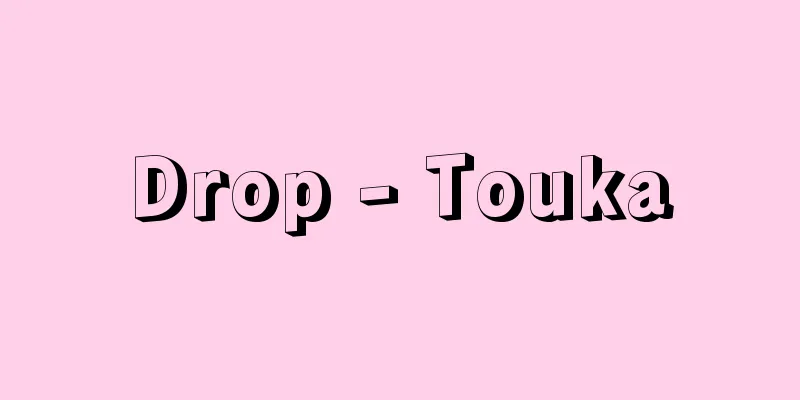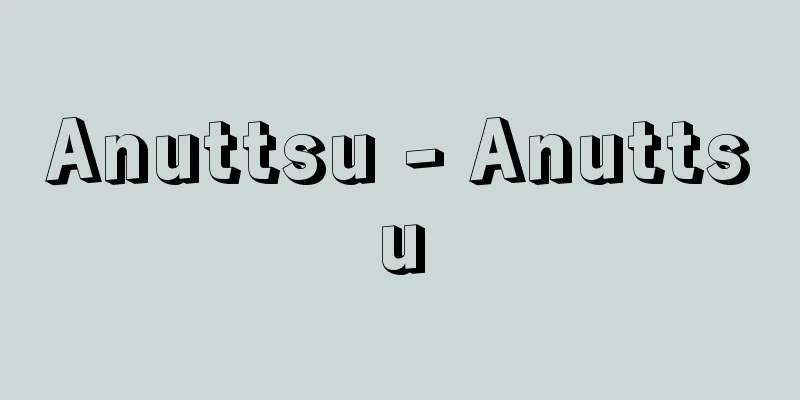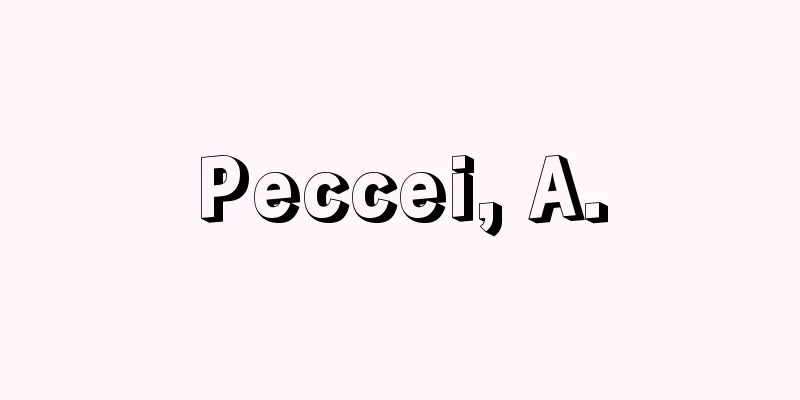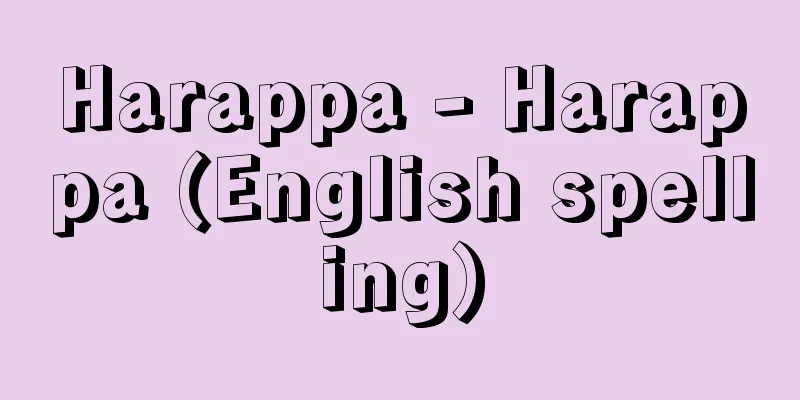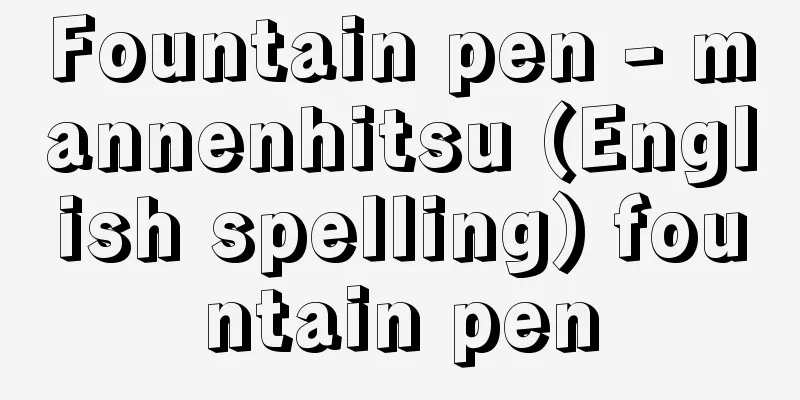Narcotic

|
Narcotics is a general term for a series of drugs that are habit-forming and addictive, and that cause chronic addiction and withdrawal symptoms with continued use. It refers to drugs and plants designated by the Narcotics Control Law. Habituation means that continued use of a drug creates a desire for that drug, indicating psychological dependency. Addictive means that continued use of a drug leads to a strong desire for the drug, and stopping administration causes physical and mental confusion. Narcotics were previously called narcotic drugs, and narcotic simply meant anesthetic drugs, but now the term is used internationally to refer to narcotics. [Fumiji Koho] kindsNarcotics are divided into natural and synthetic drugs. Natural narcotics include opium, opium alkaloids such as morphine and codeine extracted from opium, morphine derivative oxymethebanol, and cocaine extracted from coca leaves. Synthetic narcotics include pethidine hydrochloride and fentanyl citrate. Codeine, dihydrocodeine, and oxymethebanol are used as antitussives, opium preparations are used as analgesics, sedatives, and antidiarrheals, and opium alkaloids, morphine hydrochloride, pethidine hydrochloride, fentanyl, and dromoran are used as analgesics and anesthetic adjuvants. Ethylmorphine hydrochloride (euhinin) is used as an eye drop because it has antitussive and analgesic effects and dilates local blood vessels in the eye. Cocaine hydrochloride is prescribed as a local anesthetic for eye drops, and in combination with morphine hydrochloride in Brompton's mixture. Currently, the opium alkaloid preparations available in Japan as medical narcotics include opium powder, opium powder, opium tablets, opium tincture, alkaloids extracted from opium, and morphine preparations such as opium alkaloid hydrochloride, opium alkaloid injection, ethylmorphine hydrochloride, morphine hydrochloride, tablets, and injection, and codeine preparations include codeine phosphate, codeine tablets, codeine 10x powder, dihydrocodeine phosphate, codeine 10x powder, and oxymethebanol powder, tablets, and injection. Combination preparations include opium ipecac powder (Dohful powder) for oral use, and injections include opium alkaloid-atropine injection, opium alkaloid-scopolamine injection, weak opium alkaloid-scopolamine injection, compound oxycodone injection, compound oxycodone-atropine injection, and morphine-atropine injection. Coca alkaloids include cocaine hydrochloride, synthetic narcotics include pethidine hydrochloride, pethidine hydrochloride injection, and fentanyl citrate injection, and combination drugs include Talamonal (a combination of fentanyl citrate and droperidol), petilorfan injection (a combination of pethidine hydrochloride and levallorphan tartrate), and weak petilorfan injection. In addition, the narcotics listed in the appendix to the Narcotics Control Law enacted in 1953 (Law No. 14 of 1953, currently the Narcotics and Psychotropic Substances Control Law) were 21 opium alkaloid narcotics, 5 coca alkaloid narcotics, and 54 synthetic narcotics, but by Cabinet Order No. 327 of 1988, two opium alkaloid narcotics and 13 synthetic narcotics were added, and more have been added since then. In addition, domestic narcotics refer to preparations of codeine phosphate and dihydrocodeine phosphate at a concentration of 100 times or less, and although a license is required for their manufacture, the handling of such products is not subject to the Narcotics Control Law. In reality, no narcotics other than those for medical use are used. In particular, diethylacetylmorphine (heroin) has a strong analgesic effect, but also has significant side effects and is addictive, and its use is prohibited in Japan. The most effective use of narcotics is to relieve the pain of terminal cancer. An example is morphine-cocaine mixture (Brompton mixture). Morphine is also often used before and after surgery and in the case of angina attacks. [Fumiji Koho] Laws and RegulationsSince it is difficult for one country to control narcotics alone, it is necessary to respond not only domestically but also internationally. Domestically, narcotics control in Japan has been in place since the end of the Edo period, and the Treaty of Amity and Commerce with the United States at that time, including the Japan-Netherlands Additional Treaty of 1857 (Ansei 4), includes provisions strictly prohibiting the import of opium. This prohibition was inherited by the Meiji Restoration government, which took measures to gradually improve laws related to narcotics, and was carried over into the Taisho and Showa periods, culminating in the Narcotics Control Law (Law No. 14 of 1953). During this period, as many as 17 related laws were enacted, from the Opium Sales Law (1870) to the old Narcotics Control Law (1948). The old Narcotics Control Law was a compilation of previous regulations, but on the other hand, with the expansion of international exchange, the number of international illegal drug trades and large-scale smuggling crimes increased, and the Narcotics Control Law was enacted in 1953 out of the need for more effective control. However, from around 1960 (Showa 35), drug crimes increased year by year, became more serious, and the number of addicts increased. In 1963, the law was partially revised to establish a system of involuntary hospitalization for addicts, which was subject to penalties. In 1970, it was further revised, and LSD was also regulated as a narcotic. The Narcotics and Psychotropic Substances Control Law, which came into force in 1990 (Heisei 2), amended the Narcotics Control Law to include psychotropic substances as a regulated item. Furthermore, in 1992, the so-called Two Narcotics Laws were enacted to prevent the illegal trade of narcotics and psychotropic substances. Internationally, several treaties have been concluded and cooperation mechanisms established. The first international conference was held in Shanghai in 1909, at the suggestion of U.S. President T. Roosevelt, where the illicit use of opium was discussed. Since then, several international conferences have been held and many international treaties have been concluded. These have amounted to about 10 treaties, from the International Opium Convention and Final Protocol in 1912 to the Single Convention on Narcotic Drugs in 1961. As for cooperation organizations, the United Nations, which was established in 1945, naturally plays an important role in narcotics control, but its internal organizations include the Commission on Narcotic Drugs, the World Health Organization (WHO), the International Narcotics Control Board, etc. Furthermore, organizations outside the United Nations include the International Criminal Police Organization (ICPO) and the Customs Cooperation Council. [Kaoru Ohashi and Shinji Shimizu] The problem of drug addictionBecause narcotics are addictive drugs, once a person has abused them and experienced the euphoric feeling, they will develop a desire to take them again (psychological dependence), and this will also create a state of physical balance. As a result, once the drug's effects wear off, painful withdrawal symptoms will occur, making it extremely difficult for the person to stop using narcotics on their own. In addition, some drugs have the characteristic of causing people to gradually increase their usage in order to obtain the initial medicinal effects (tolerance), and continued use often leads to dependence. [Kaoru Ohashi and Shinji Shimizu] Drug crimeDrug crimes in Japan were hardly a social problem until World War II, but became serious after the war. Looking at the trend in the number of people arrested for drug offenses since 1951, violations of the Narcotics (and Psychotropic Substances) Control Law occurred significantly in the 1950s and 1960s, reaching a peak of 2,135 arrests and 2,571 arrests in 1963. However, when comprehensive measures were implemented in the same year, the numbers dropped sharply, and from 1965 onwards the trend continued to decline, with both the number of cases and the number of people arrested falling to one-tenth of the 1950s and 1965s. However, since the 1980s the numbers have been on the rise, and the drug abuse demographic has expanded to include the general public, including teenagers and housewives, making the problem more serious. In particular, stimulant drug use is beginning to spread among young people, who were overwhelmingly users of organic solvents. There is concern about unprecedented behavior in stimulant drug use, such as the use of the acronym "S" (a play on the initials of the word "speed" in America), use of stimulants through the nasal suction method (sniffing) using aluminum files instead of syringes, and use as a diet pill. Stimulants have a strong image of being illegal and scary due to their association with organized crime, but now that image is fading when they are used as a diet pill. In addition to the ease of suctioning stimulants through the nasal suction, mobile sites can be easily accessed from cell phones, making stimulants very familiar to young people and causing social problems. Opium law violations were not a problem in the 1940s and early 1950s, with the number of cases and the number of people violating them being less than 100. However, they increased rapidly from the late 1950s to the mid-1960s, and at one point the number of cases and the number of people violating them both reached over 1,100. However, they have since decreased and remain at the current level. On the other hand, Cannabis Control Law violations were negligible in the 1940s and 1950s, but have increased rapidly since the mid-1960s, and in the 1970s in particular, the number of cases and the number of people violating them reached over a thousand, and in 1995 (Heisei 7), the number of violators reached 2,103, which cannot be ignored. In the past, the majority of violations of the Narcotics (and Psychotropic Substances) Control Law were committed by members of organized crime, but they have now spread to ordinary citizens as well, and violations of the Opium Law and Cannabis Control Law are not only committed by members of organized crime, but also by people in the entertainment industry and entertainers. However, compared to Western countries, Japan's drug pollution is still at a mild stage. In Europe, illegal drug use is spreading to civil society, as exemplified by the Netherlands, where marijuana can be purchased in coffee houses, although it is limited to personal use, and Zurich, Switzerland, where a referendum was held to provide heroin users with a publicly funded heroin injection service for the purpose of preventing HIV infection and crime. For this reason, even if the government does not acknowledge illegal drug use, it has introduced realistic measures to prioritize the prevention of HIV infection spread by sharing syringes, etc., and to accept harm-minimizing usage methods (harm reduction approach) since personal use exists. In these countries, it can be said that they are in a situation where they have no choice but to accept the coexistence of illegal drugs and society. However, Japan rejects this coexistence and takes a zero-tolerance approach, called "No, never" (a drug abuse prevention slogan by the Japan Center for the Prevention of Narcotics and Stimulants Abuse). [Kaoru Ohashi and Shinji Shimizu] "Katsuo Kenmochi, 'This is Drugs: A Photographic Look at the Roots of Modern Diseases' (1984, Rippushobo)" ▽ "Ministry of Justice Research and Training Institute, 'White Paper on Crime', various editions (Ministry of Finance Printing Bureau)" [References] | | | | | | | | |Drug | | | |Source: Shogakukan Encyclopedia Nipponica About Encyclopedia Nipponica Information | Legend |
|
習慣性および耽溺性(たんできせい)があり、連用することによって慢性中毒をおこし、禁断症状を現す一連の薬物の総称で、麻薬取締法で指定された薬物および植物をいう。習慣性とは、薬物を連用した際にその薬物に対する欲求をおこすことをいい、精神的な依存性を示す。耽溺性とは、薬物の連用によってその薬物に対する欲求が強くなり、投与を中止すれば身体的・精神的な混乱を生ずることをいう。なお、麻薬は従来narcotic drugとよばれ、単にnarcoticといえば麻酔薬のことであったが、現在では国際的に麻薬をさすようになっている。 [幸保文治] 種類麻薬には天然麻薬と合成麻薬とがある。天然麻薬としては、アヘンおよびアヘンより抽出されたモルヒネやコデインなどのアヘンアルカロイド、モルヒネの誘導体オキシメテバノール、コカ葉から抽出されたコカインがある。合成麻薬には、塩酸ペチジンやクエン酸フェンタニールがある。コデインおよびジヒドロコデイン、オキシメテバノールは鎮咳(ちんがい)剤として用いられ、アヘンの製剤は鎮痛・鎮静・止瀉(ししゃ)剤として、またアヘンアルカロイド、塩酸モルヒネ、塩酸ペチジン、フェンタニール、ドロモランは鎮痛および麻酔補助剤として用いられる。塩酸エチルモルヒネ(オイヒニン)は鎮咳・鎮痛および眼局所血管の拡張をもたらすことから点眼薬として用いられる。塩酸コカインは局所麻酔剤として点眼用に、またブロンプトン混液に塩酸モルヒネと配合して処方される。 現在、日本で医療用麻薬として市販されているものには、アヘンアルカロイド系製剤として、アヘンそのものの製剤であるアヘン末、アヘン散、アヘン錠、アヘンチンキ、アヘンより抽出したアルカロイドおよびモルヒネ系製剤である塩酸アヘンアルカロイド、同注射液、塩酸エチルモルヒネ、塩酸モルヒネ、同錠、同注射液があり、コデイン系ではリン酸コデイン、同錠、同十倍散、リン酸ジヒドロコデイン、同十倍散、その他オキシメテバノール散、同錠、同注射液がある。配合剤ではアヘン・トコン散(ドーフル散)が内服用で、注射剤にはアヘンアルカロイド・アトロピン注射液、アヘンアルカロイド・スコポラミン注射液、弱アヘンアルカロイド・スコポラミン注射液、複方オキシコドン注射液、複方オキシコドン・アトロピン注射液、モルヒネ・アトロピン注射液がある。コカアルカロイド系では塩酸コカインがあり、合成麻薬では塩酸ペチジン、同注射液、クエン酸フェンタニール注射液、配合剤ではタラモナール(クエン酸フェンタニールとドロペリドールの配合剤)、ペチロルファン注射液(塩酸ペチジンと酒石酸レバロルファンとの配合剤)、弱ペチロルファン注射液がある。 なお、1953年(昭和28)制定の麻薬取締法(昭和28年法律14号、現、麻薬及び向精神薬取締法)の別表に記載されている麻薬は、アヘンアルカロイド系麻薬として21種、コカアルカロイド系麻薬として5種、合成麻薬として54種の薬物であったが、63年の政令第327号によって、アヘンアルカロイド系麻薬2種、合成麻薬13種がさらに追加指定され、その後も追加がなされている。また、家庭麻薬とはリン酸コデインおよびリン酸ジヒドロコデインの百倍散以下の濃度の製剤をいい、製造には免許を必要とするが、その製品の取扱いは麻薬取締法の対象とならない。実際には前述の医療用麻薬以外は使われていない。とくに、ジエチルアセチルモルヒネ(ヘロイン)は鎮痛作用も強力であるが副作用や耽溺性も大きく、日本では使用を禁止している。 麻薬のもっとも有効な使用例としては、癌(がん)の末期の疼痛(とうつう)に対する緩和がある。モルヒネコカイン混液(ブロンプトン混液)がその例である。また、手術の前後、および狭心症発作の場合にもモルヒネがよく用いられる。 [幸保文治] 法規制麻薬統制は一国だけではその取締りが困難なので、国内的だけでなく国際的にもその対応が必要である。国内的にみると、わが国における麻薬の取締りは江戸時代末期からあり、1857年(安政4)の日蘭(らん)追加条約をはじめ、当時のアメリカとの修好通商条約のなかに、アヘンの輸入を厳禁する旨の規定がある。この禁令は明治維新政府もこれを継承し、麻薬に関する法令を逐次整備する措置を講じ、大正、昭和と引き継がれて、麻薬取締法(昭和28年法律14号)に及んでいる。この間における関係法規の制定は、販売鴉片烟(あへんえん)律(1870年)より旧麻薬取締法(1948年)に至るまで17の多きに達している。旧麻薬取締法は従来の取締規定を集大成したものであったが、一方で国際交流の拡大に伴い、麻薬の国際的な不正取引や大規模な密輸事犯が増加したために、より効果的な取締りの必要から、昭和28年の麻薬取締法が制定された。ところが1960年(昭和35)ごろから麻薬犯罪が逐年増加をみせ、その内容も悪質化し中毒者も増加したため、1963年にその一部を改正し、中毒者の措置入院制度を新設し罰則の対象とした。1970年にはさらに改正がなされ、LSDも麻薬として規制されることとなった。1990年(平成2)施行の麻薬及び向精神薬取締法は麻薬取締法の一部を改正し、向精神薬を規制対象に加えたものである。さらに1992年には、麻薬および向精神薬の不正取引を防止するため、いわゆる麻薬二法が施行された。 国際的には幾たびかの条約の締結と協力機構の設置がなされている。すなわち、条約については、すでに早く1909年にアメリカ大統領T・ルーズベルトの提唱で開催された上海(シャンハイ)での国際会議がきっかけで、そこでアヘンの不正使用が討議されて以来、幾たびかの国際会議が開催され、多くの国際条約が締結されてきた。それは1912年の「国際あへん条約及び最終議定書」から「1961年の麻薬に関する単一条約」に至るまでおよそ10の条約となっている。 また協力機構については、1945年に発足した国際連合は当然、麻薬取締りに関して重要な役割を果たしているが、内部機構としては麻薬委員会、世界保健機関(WHO)、国際麻薬統制委員会などがある。さらに国連以外の機関としては、国際刑事警察機構(ICPO)、関税協力理事会などがある。 [大橋 薫・清水新二] 麻薬中毒の問題性麻薬は依存性薬物であるから、麻薬を濫用して一度陶酔感を覚えた場合、ふたたび摂取したいとの欲求(精神的依存)を生じ、また身体的にもそれによって平衡が保たれている状態(身体的依存)が形成され、その結果、薬効が切れると苦痛を伴う離脱症状が生じることなどから、自ら麻薬を断つことがきわめて困難となるほか、当初の薬効を得たいため、薬物によってはしだいに使用量が増大する(耐性)特性を有しており、連用すると依存形成に至ることが多い。 [大橋 薫・清水新二] 麻薬犯罪日本の麻薬犯罪は第二次世界大戦まではほとんど社会問題とはならず、戦後に深刻な様相を呈するに至った。1951年(昭和26)以降の薬物事犯検挙人員の推移をみると、麻薬(及び向精神薬)取締法違反は昭和20年代・30年代における発生が著しく、そのピーク時の1963年には検挙件数2135件、検挙人員2571人の多きを数えるに至った。しかし同年に総合的な対策が実施されると、その数は急激に減少し、1965年以降はいっそう減少傾向をたどって、昭和50年代以降は件数、人員ともに昭和30年代の10分の1となった。しかし、昭和60年代以降は増加の傾向にあり、とくに薬物濫用者層が、青少年や主婦など一般市民層へ広がっており、問題は深刻化している。 とりわけ圧倒的に有機溶剤使用が多かった青少年の間で覚醒(せい)剤使用が拡がり始めている。「エス」(アメリカで覚醒剤がspeedとよばれることからその頭文字をもじったもの)と隠語化したり、注射器を使うかわりに、アルミファイルを使うスニフィングという鼻腔吸引法での使用や、ダイエット薬がわりに使用するなど、これまでになかった覚醒剤使用行動がみられ懸念される。覚醒剤は組織暴力団などとも関連し、違法でありこわいというイメージが強かったが、今やダイエット薬がわりとしてのエスはそうした印象を薄められている。鼻腔吸引の手軽さに加え、携帯電話からモバイルサイトに容易にアクセスし、簡単に入手できるようになっているなど、覚醒剤は青少年にとってもきわめて身近なものとなっており、社会問題化している。 あへん法違反は、昭和20年代はもちろん、30年代前半は、件数、人員とも100以下と問題にならなかったが、30年代後半から40年代なかばごろにかけて急増し、一時は件数、人員とも1100余りを数えた。しかしその後はまた減少し今日に至っている。一方、大麻取締法違反は、昭和20年代・30年代はとるに足らない数であったが、40年代なかばより急増傾向にあり、とくに50年代には件数、人員ともに千数百となり、1995年(平成7)には違反者は2103人に上り無視できない。かつては麻薬(及び向精神薬)取締法違反の大部分は暴力団関係者であったが、一般の市民にも広がっており、あへん法違反や大麻取締法違反は暴力団関係者のほかに風俗営業関係者や芸能人なども目だつ。 しかし国際的にみると日本の薬物汚染は欧米諸国と比較して、なお軽度の段階にある。個人的使用に限定しながらもコーヒーハウスでマリファナが購入できるオランダや、HIV感染や犯罪を防止するなどの目的で、ヘロイン乱用者に公費で規定量のヘロイン投与サービスを行うことを国民投票で決めたスイスのチューリッヒの場合などを典型に、ヨーロッパでは違法薬物使用が市民社会に拡散している。そのために、政府は違法性薬物使用を認めないまでも、個人使用する現状がある以上、注射器の回し打ちなどによるHIV感染の拡大防止を優先し、害を最小限にした使用法(ハーム・リダクション・アプローチ)を受けいれるという現実対応的施策を導入している。これらの国では違法薬物と社会との共存を事実上受け入れざるを得ない状況にあるといえる。しかし、日本はその共存を拒否し、「ダメ、絶対」(財団法人麻薬・覚せい剤乱用防止センターによる薬物乱用防止標語)というゼロ・トレランス・アプローチをとっている。 [大橋 薫・清水新二] 『剣持加津夫著『これが麻薬だ 写真で見る現代の病根』(1984・立風書房)』▽『法務省法務総合研究所編『犯罪白書』各年版(大蔵省印刷局)』 [参照項目] | | | | | | | | | | | | |出典 小学館 日本大百科全書(ニッポニカ)日本大百科全書(ニッポニカ)について 情報 | 凡例 |
<<: Mayagüez (English spelling)
>>: Maya (English spelling) māyā
Recommend
Save - Se-bu (English spelling) Maurice Scève
French poet. Leader of the "School of Lyon&q...
Renju
It is commonly known as "Gomoku Narabe"...
Stone-laying board roofing - Ishiokiitabuki
…It refers to covering a roof with wooden planks....
Pala Sena Art - Pala Sena Art
This art developed in the 8th to 12th centuries in...
《Martian Invasion》
Born in Wisconsin. Obsessed with theater, he form...
Suicide egoïste (English spelling)
…In his book “Suicide: An Essay on Sociology” (18...
Alkabara - Alkabara
…All goods brought in and out by the FLOTUS were ...
Jones, M.
…For example, in the UK, there is an amphitheater...
mutation genetics
...Currently, this field studies the structure, r...
War Requiem
This is a requiem by the British composer Benjami...
Beccafumi, Domenico
Born: Around 1486, near Siena Died: May 1551, Sien...
Mr. Takekoshi - Bamboo shoot maggot
A family of long-time retainers of the Owari Tokug...
Imaginary quadratic field
… [Integers in quadratic fields] For the quadrati...
Blocking oscillator - Blocking oscillator
A type of sawtooth wave oscillator in which vacuum...
Three volumes of Japanese hymns - Sanjo Wasan
A wasan written by Shinran. It was completed in 12...
